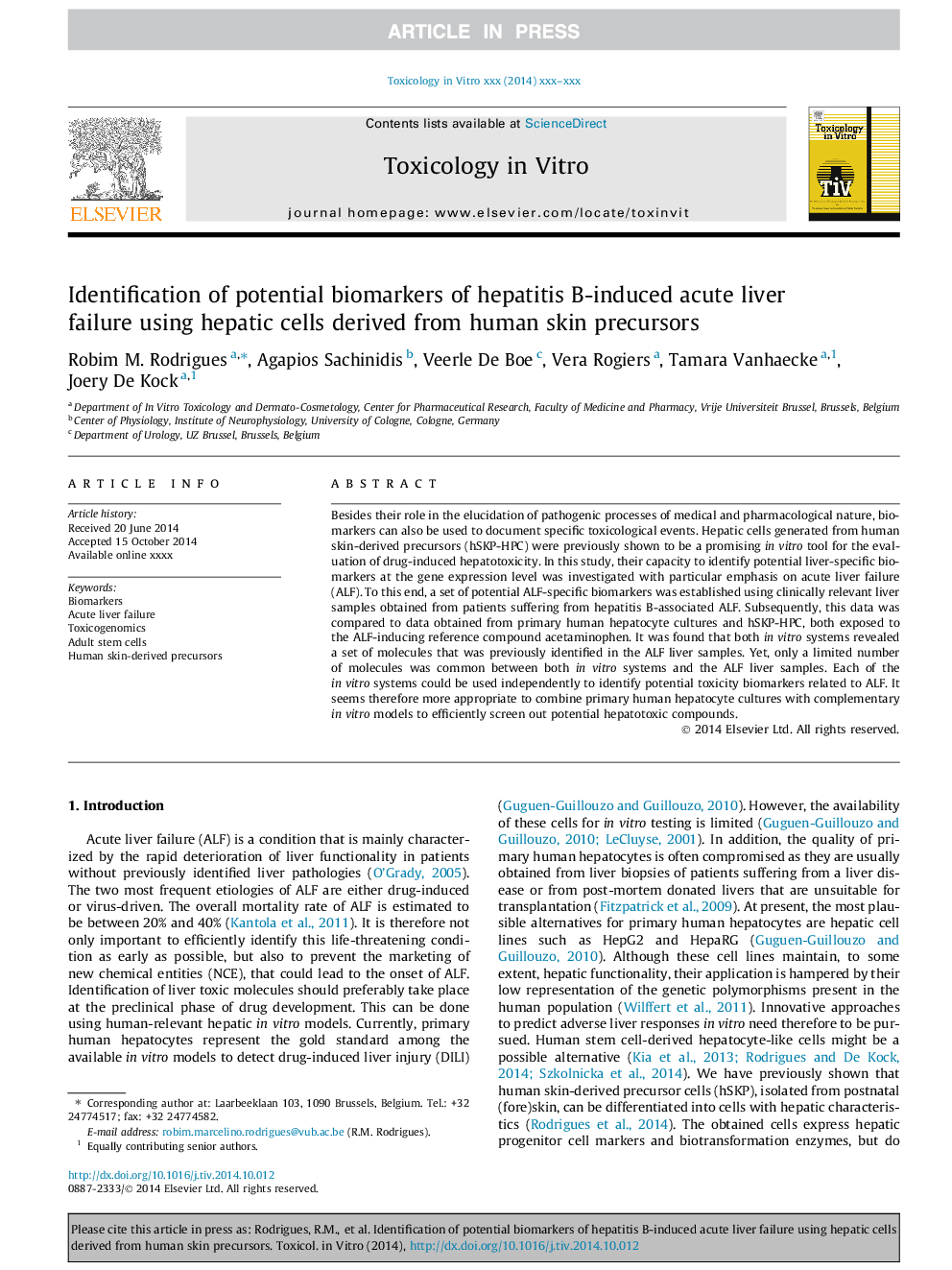| Article ID | Journal | Published Year | Pages | File Type |
|---|---|---|---|---|
| 5861345 | Toxicology in Vitro | 2015 | 9 Pages |
Abstract
Besides their role in the elucidation of pathogenic processes of medical and pharmacological nature, biomarkers can also be used to document specific toxicological events. Hepatic cells generated from human skin-derived precursors (hSKP-HPC) were previously shown to be a promising in vitro tool for the evaluation of drug-induced hepatotoxicity. In this study, their capacity to identify potential liver-specific biomarkers at the gene expression level was investigated with particular emphasis on acute liver failure (ALF). To this end, a set of potential ALF-specific biomarkers was established using clinically relevant liver samples obtained from patients suffering from hepatitis B-associated ALF. Subsequently, this data was compared to data obtained from primary human hepatocyte cultures and hSKP-HPC, both exposed to the ALF-inducing reference compound acetaminophen. It was found that both in vitro systems revealed a set of molecules that was previously identified in the ALF liver samples. Yet, only a limited number of molecules was common between both in vitro systems and the ALF liver samples. Each of the in vitro systems could be used independently to identify potential toxicity biomarkers related to ALF. It seems therefore more appropriate to combine primary human hepatocyte cultures with complementary in vitro models to efficiently screen out potential hepatotoxic compounds.
Related Topics
Life Sciences
Environmental Science
Health, Toxicology and Mutagenesis
Authors
Robim M. Rodrigues, Agapios Sachinidis, Veerle De Boe, Vera Rogiers, Tamara Vanhaecke, Joery De Kock,
